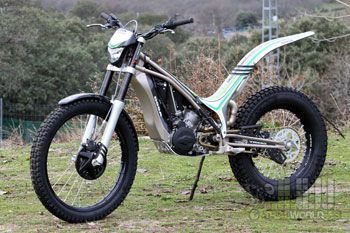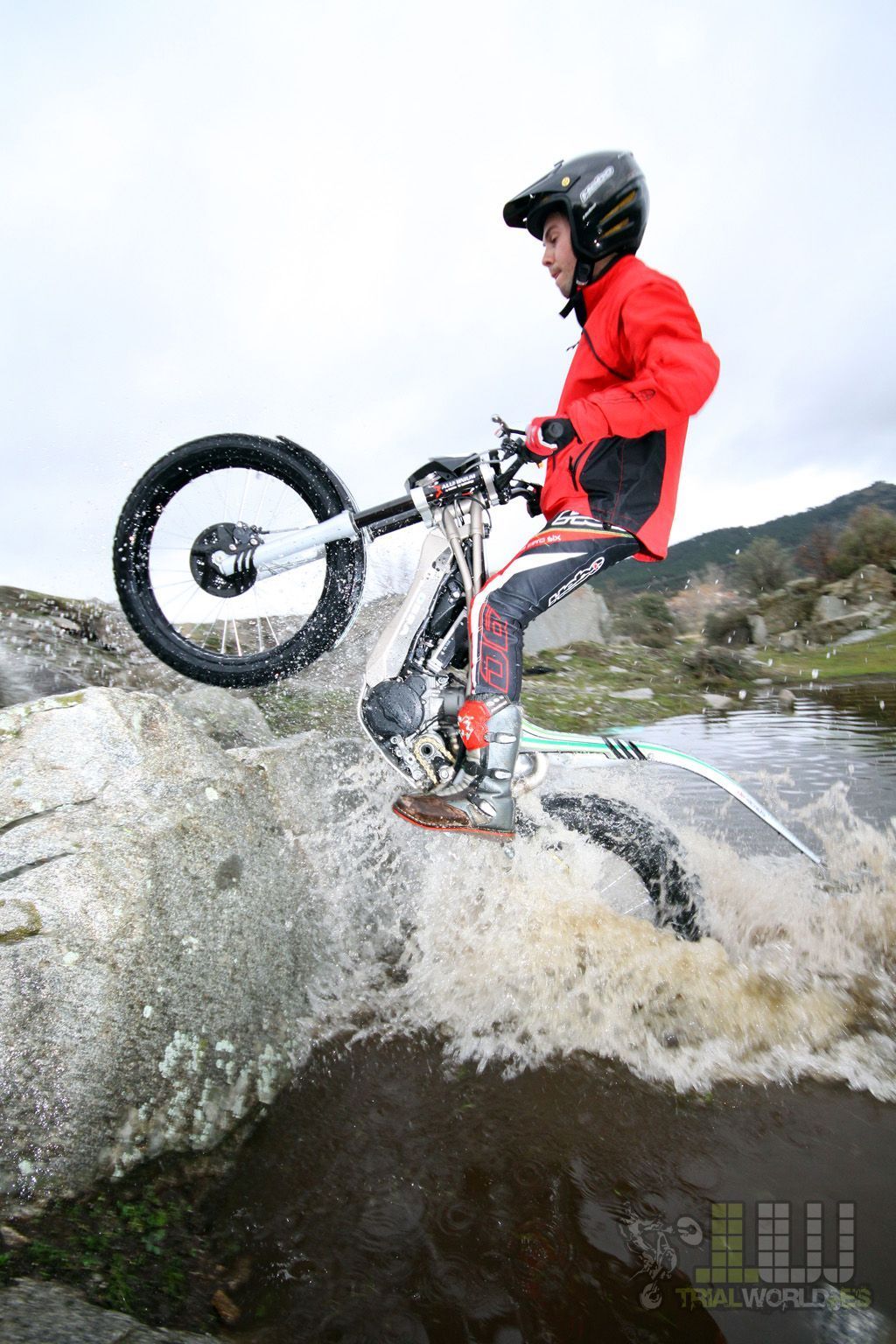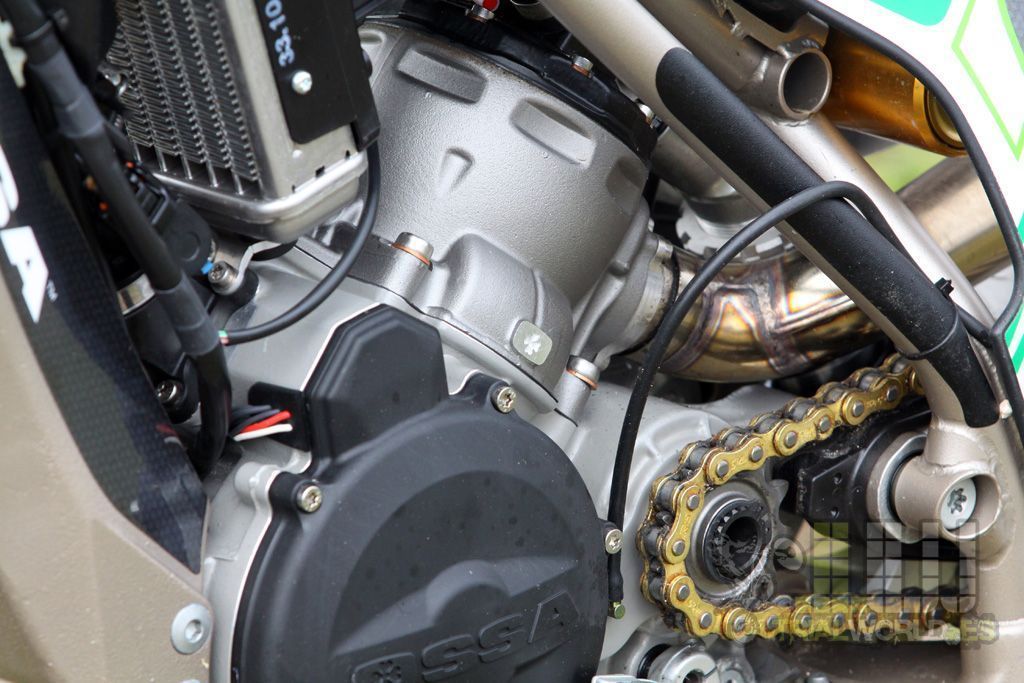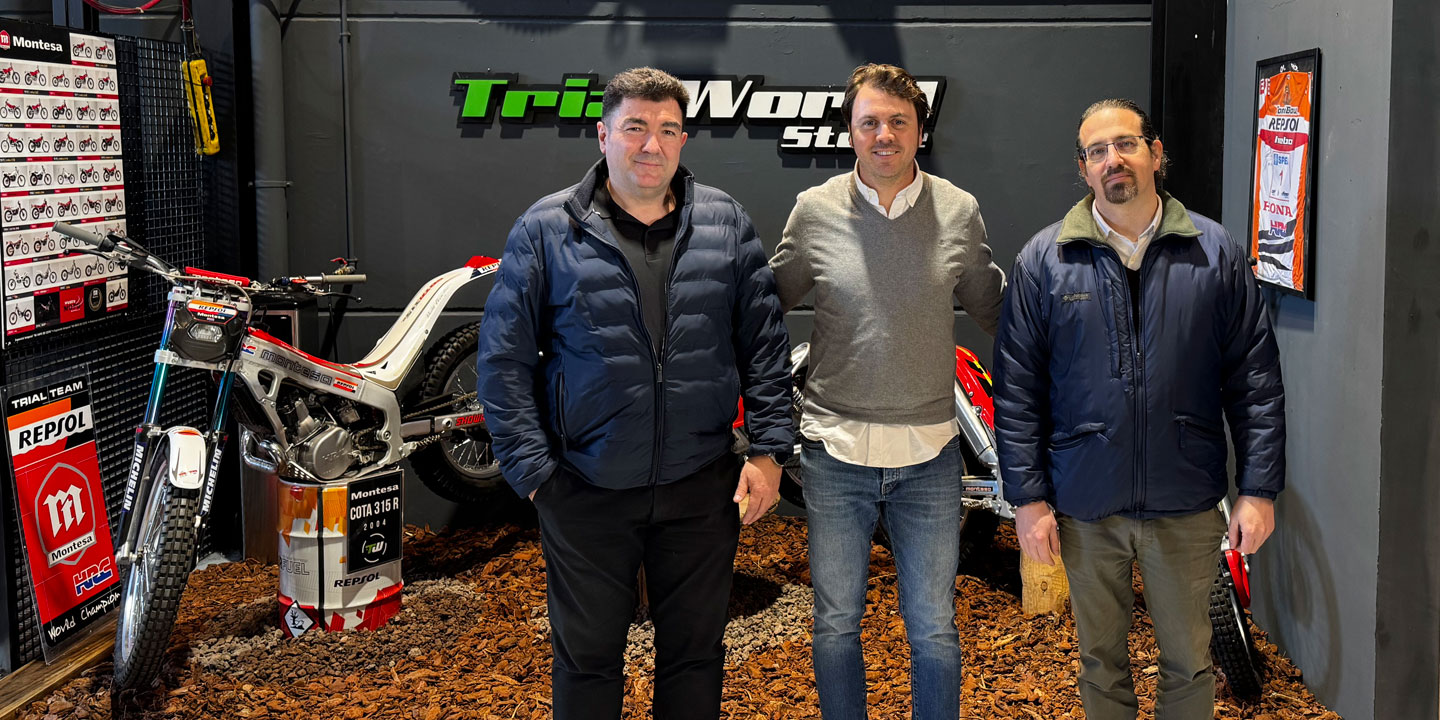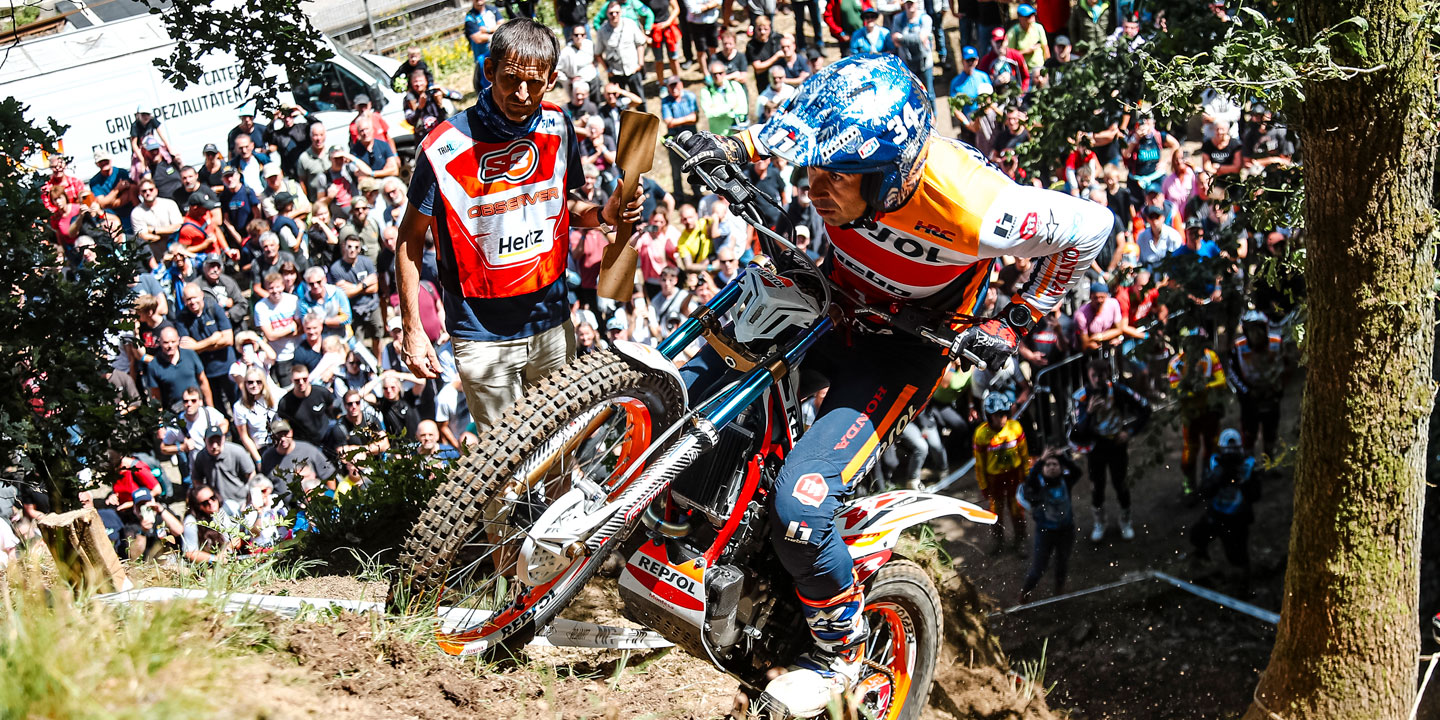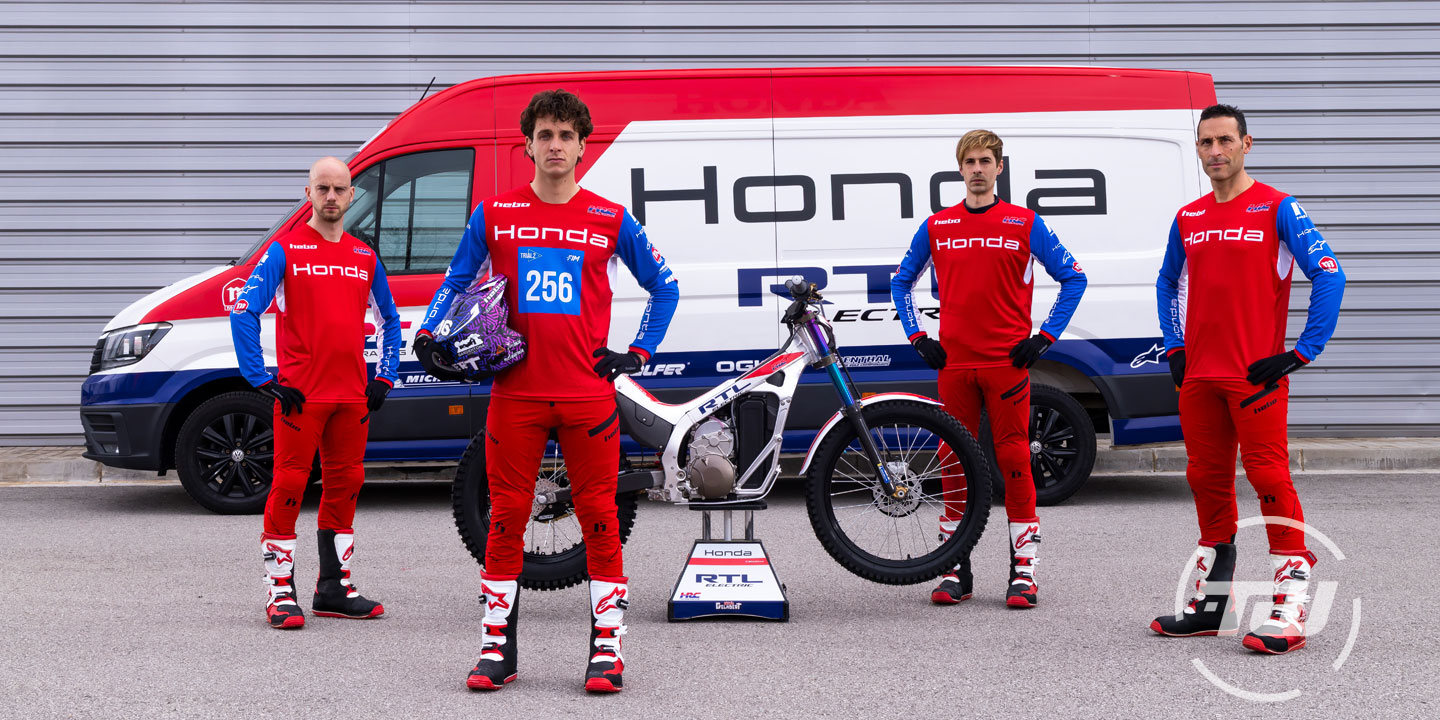The clover brand returns to dealerships three decades after its closure with an atypical and revolutionary trial version, equipped with unprecedented technical solutions and a very high degree of maturity.
In this in-depth test of a standard unit from the first series, we take a closer look at all the details and get behind the wheel to share with all of you the keys to the most anticipated bike of 2011.
In detail: the engine
The characteristic components of a trial bike on the Ossa TR 280i are completely redistributed, following a logic that, according to Ossa’s engineers, is ideal for the practice of this particular specialty.
The first thing that catches your eye when looking at its engine is the oblique position of the cylinder, with the intake being completely vertical at the front and the manifold outlet at the rear of the cylinder.
The air filter is located, as in the Sherco, in the upper front, in such a way that it guarantees less contamination and greater tightness as it is less exposed to external agents. In addition, some elements of the electronic injection fuel oil are also located under the same filter cover.
The fuel tank, with a capacity of approximately three litres, is located at the front, just where the radiator should be located, which is relocated behind the aforementioned tank. The aim of this proposal is to achieve a more optimal centre of gravity for the demands of the trial and to safeguard the radiator from possible accumulations of mud. Ossa assures that the engine is able to work perfectly at a constant temperature thanks to its optimal protection and that the engineers have taken into account the temperature of all the components when distributing them in the engine block.
In detail: the chassis
The frame of the Ossa combines chrome molybdenum steel with aluminum inserts, in order to lighten certain parts where the high welding load on steel irremediably weighs down the whole. Some of these components made of aluminum are the steering tube, fuel tank, footpegs, and linkage bracket.
The suspension equipment is jointly developed by Marzocchi and Öhlins. The rear suspension is equipped with an independent reservoir with piston valves and hydraulic adjustment. The culmination of this successful system is a well-protected and integrated linkage system to avoid possible shocks.
The front fork is signed by Marzocchi. However, the first units are equipping the standard one with aluminum bars, and not the specific inverted one that Ossa has developed closely with the Italian brand. We don’t know if it’s due to production delays or that the component is still in the testing phase.
Thorough Testing
As soon as we found out that there were already units of the new Ossa TR 280i in Madrid, we contacted one of the lucky owners through a good friend. Chema Fominaya, a great fan and collector of Ossa, had in his possession the twelfth unit and kindly gave it to us for a full morning to carry out our first in-depth test at TRIALWORLD.
Externally it is revolutionary
for the reasons that we describe in the “in detail” section, where you will have noticed that basically Ossa has chosen to redistribute a good number of elements in order to obtain a more equitable distribution of masses. Observing the bike in detail you realize that it still retains symptoms of a prototype in certain finishes, such as the support of the footrests, swingarm stickers, absence of a stand or the crankcase vent, mainly.
The rear fender is higher than normal due to the demands of the silencer, which can be somewhat annoying at times for shorter riders, although it is not something to worry about. Curiously, the shapes of this fender run away from the trends imposed by its rivals, with very wide and flat lines; Ossa opts for very curved plastics, perhaps to minimize that visual sensation of large free space with respect to the wheel, and reminds us in some way of those Gas Gas JTR and JTX of the years 96 and 97.
Otherwise, the Ossa has a remarkable level of finishes, where we highlight the good thermodynamic organization, the exhaust system, the cleanliness of its shapes and the care of the small details.
At the controls
Well, as soon as we get on the bike, and although it seems utopian, everything is very familiar to us and in general terms it maintains the logical geometries of its rivals. Controls are standard, with the exception of the throttle grip, which is short-travel. This detail reminds us of the modifications that many make in 125 versions to improve acceleration or achieve a more direct response. However, it only takes a few meters to realize that the relocation of components is not only seen, but also felt.
The chassis is minimalist, but offers optimal rigidity and surprises with its nobility on all types of terrain. The bike is tremendously light, especially at the front, however the geometries of the frame accentuate the Weight load on the front train And the reactions are a bit slow -or rather, different from normal-, especially with a full tank, in relation to the agility it exudes in the back.
This contrast in sensations is logical if you compare the Ossa directly with another model, but when you have been at the controls for a while and concentrate on its riding, the ride quality and confidence it brings is truly spectacular. As the hours go by you realize that under a completely different composition, this bike offers very familiar sensations that quickly translate into efficiency within the zones.
Suspensions
The suspension team is one of the points where they have placed the most emphasis on Ossa. A revolutionary inverted fork was announced, and this is how it appears on the official Ossa website, with certain particularities that seemed to justify this technical solution, already discarded by all manufacturers in the mid-nineties. Failing that, at least in this first series, we find a magnificent Marzocchi fork with aluminum bars very similar to the one that Gas Gas mounts in its Trial models. The outstanding performance is beyond doubt, as it combines the lightness that Ossa pursues so much, precision and poise.
Its hardening is progressive, so lovers of excursions or those who are new to the specialty will find themselves very comfortable. The homogeneity with the eye-catching Öhlins TTX is another of the strengths of this part of the cycle. We must say that the test unit was very new and the suspensions were not rolled, but we were able to evaluate in a very positive way the agility and speed with which the rear end reacts.
The fact that the shock has a separate reservoir on the outside is positive for its performance, especially in hot weather or prolonged operation, where standard bodies tend to fatigue more quickly.
Mechanics
Let’s move on to the TR280i’s most precious treasure. That last acronym is the key to our protagonist’s behavior, as it has a Kokusan electronic injection power system, located just behind the fuel tank. So far we have tested 4T motorcycles with injection, 4T with carburetor and 2T with carburetor, but we had to get on a 2T with injection. The formula is right: look for the precision of the injection with the competitiveness of a cylinder with segments. However, the particularities of the trial, where the low revs are taken advantage of, have brought the engineers to their heads in the set-up of the system.
In Ossa they have done a splendid job, although there is still a long way to go. Starting up goes smoothly without speeding up. On some occasions, especially at the premiere of the unit, Chema confirmed that it was difficult to start the bike, although it seems that these failures have not been repeated.
Once started, you have to get used to a slightly higher idle than normal, causing the bike to tend to leave with the gear engaged and the clutch depressed. On the move, the response to the short-travel throttle is absolutely immediate, very alert and really easy to squeeze. The fact that its response is uniform, without jerks or bumps, as well as predictable, helps make the Ossa a popular bike where any type of rider can find comfortable.
We have noticed that at low revs the injection does not go as fine as it should, as we have the feeling that it is poor on gasoline and usually “stings” in the first quarter of the gas fist. We suppose that it will be a mere matter of fine-tuning, something where we are sure that Ossa will not stop working on the next remittances. On the other hand, the clutch is progressive and easy to modulate, reminding us a lot of the feel of Gas Gas, although by virtue of Ossa, less spongy and pleasant.
It should also be noted that the staggering of the gear is optimal in all gears, except in the last one, which is somewhat far away and the engine dies too much of revs when selecting the sixth.
Conclusions
In short, this is a bike that is truly innovative in concept, but on paper it offers very familiar sensations to satisfy any type of rider, regardless of their level of riding.
In this first series there are some prototype details, but it is logical, so we trust Ossa to gradually improve a bike that is born being highly competitive. We must applaud the efforts of its creators, such as Josep Serra “Xiu”, in their eagerness to investigate and offer us innovative technical solutions that enrich the specialty.
Of course, exclusivity comes at a high price, so those lovers of the clover brand who want a TR 280i will not only have to hurry to get one of the few units manufactured so far, but will also have to face an outlay of 6,640 euros.
